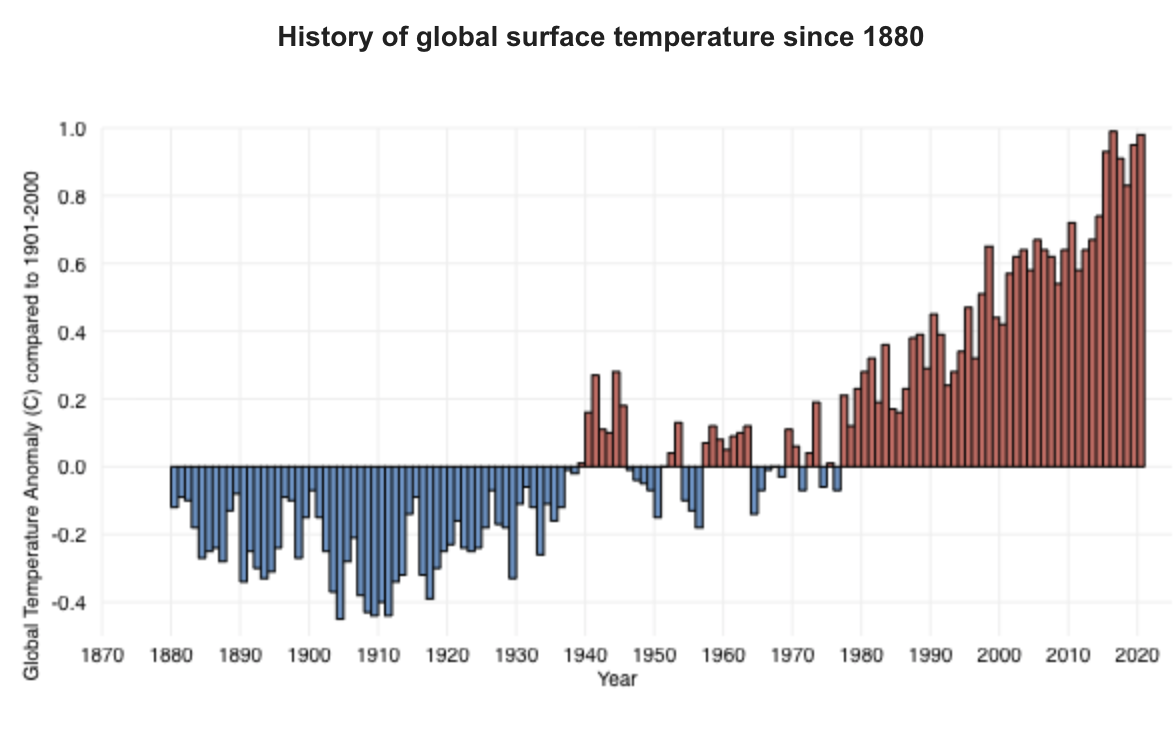As the torrent of money into ESG vehicles continues to flow, the question running through many people’s minds is “why now?” To me, there are three major factors driving the interest. First, COVID and climate change related natural disasters. Second, the recent assessment report from the UN Intergovernmental Panel on Climate Change (IPCC). Third, the upcoming Oct/Nov. COP 26 UN Climate Change Conference. Each of these should be no surprise to anyone closely following ESG investments, but each of these is occurring in a close sequence helping drive investor demand.
When it comes to COVID’s impact, it’s important to remember it’s perception, not the direct connection that matters to investors. JPM did a recent survey that asked, “In your view, what will be the implications of the COVID-19 crisis for ESG investment momentum in the next 3 years?” 55% answered in a positive box indicating they perceived there was a close connection between the two even though there’s no direct cause and effect between them. (Ok, you can make the case that the Chinese reaction to COVID and the shutting down of supply chains is a direct connection.) And since COVID has not been even close to being controlled, the headlines, outbreaks and deaths continue to push the momentum.

Climate change or temperature change and natural disasters are directly connected to the ESG theme. NOAA’s 2020 Global Climate Report from their National Centers for Environmental Information heightened the attention to dramatic rise in recent temperatures in the world. The graph below visually makes a strong, credible case for the belief that this rise in temperatures is not cyclical or naturally occurring. As it states in the report, “…every month of 2020 except December was in the top four warmest on record for that month.”

On the natural disaster front, China, Europe, Japan, Australia and the United States have all recently had unusual flooding considered “once in a 100-years.” Except, these are occurring with frequencies that appear to be every 5 years. Germany was particularly surprising as the amount of rain falling was not only unusual (6 inches in 24 hours) but devastating with 196 dead. The heat dome over Seattle led to record highs for that city and many in the Northwest. Finally, Texas Snowmagedon that blacked out much of the state and underscored how the state’s electric power system infrastructure was not prepared for a cold temperature extreme.
On the supply chain front, furniture making in the United States has been curtailed because a foam shortage occurred due to plants in TX and LA being shut down. All of these are top stories for newsrooms and social media platforms as they show the damage and make the connection to climate change.
The UN’s IPCC AR6 Climate Change 2021 assessment report was released 3 weeks ago and issued a “Code Red” for humanity as human driven global heating has risen. This research was widely reported across the globe with every major news service and social media platforms reporting on it. Here are the major takeaways in the report:
- It is unequivocal that human influence has warmed the atmosphere, ocean and land. Widespread and rapid changes in the atmosphere, ocean, cryosphere and biosphere have occurred.
- The scale of recent changes across the climate system as a whole and the present state of many aspects of the climate system are unprecedented over many centuries to many thousands of years.
- Human-induced climate change is already affecting many weather and climate extremes in every region across the globe. Evidence of observed changes in extremes such as heatwaves, heavy precipitation, droughts, and tropical cyclones, and, in particular, their attribution to human influence, has strengthened since AR5.
- Improved knowledge of climate processes, paleoclimate evidence and the response of the climate system to increasing radiative forcing gives a best estimate of equilibrium climate sensitivity of 3°C with a narrower range compared to AR5.
While not all the information in the report points to a coming environmental disaster, all the news around it certainly did and warned of dire consequences should rising temperatures not be contained.
Finally, we’ll have the UN’s COP 26 Climate Change Conference in October/November. This will have over 200 nations attending and will be the focus of the world leading up to those days. At the 2015 meeting, the countries attending created the controversial Paris Agreement. At this year’s meeting we should expect the following:
- Updated pledges (Nationally Determined Contributions, NDCs) setting tougher targets for reducing emissions by 2030
- Carbon market mechanisms (taxes)
- Funding for loss and damage
- ‘Nature-based solutions’ (NBS)
- Common timeframes for countries’ NDCs
Given the recent EU and China carbon reduction program targets, the United States will be under pressure to participate and match. The $3.5T social infrastructure spending bill working through Congress is where this will show up. I’d watch for a carbon border adjustment tax as an avenue for pricing and taxing carbon production to reduce it.
COVID with climate change disasters, UN IPCC assessment report and the upcoming COP 26 Climate Conference provide constant “top-of-mind” investor interest. Additional climate events during the US hurricane season will create conditions for additional momentum in this theme. Whether you believe in climate change or not doesn’t matter. What matters is that investors and policy makers around the world do believe. And changes are occurring as money flows to it.


